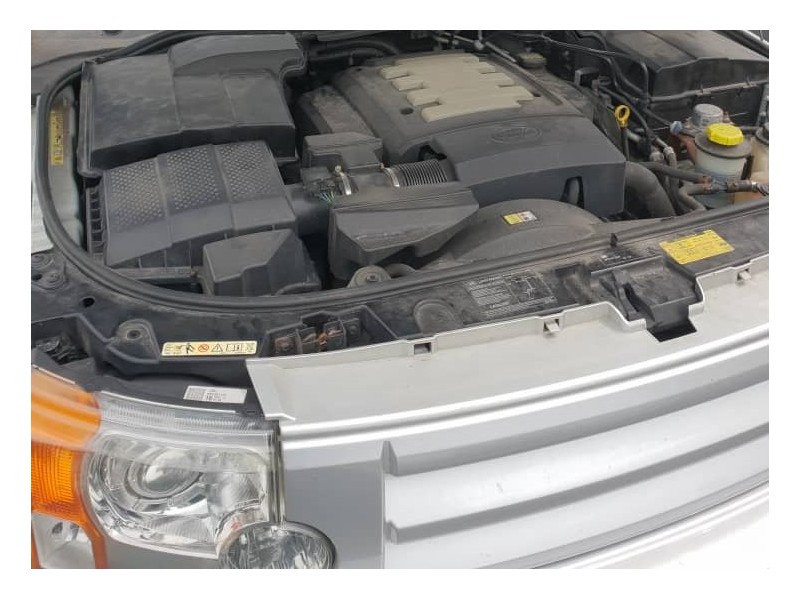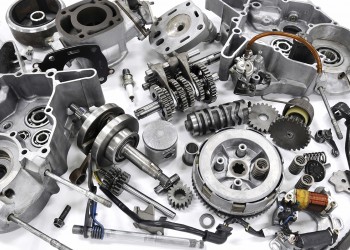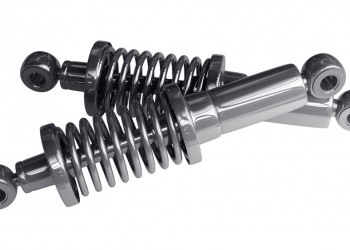The fan clutch is a part of the cooling system of your vehicle that controls the engine cooling fan. When the engine is at low temperature and cooling isn’t required, the fan clutch freewheels which lessens the load on the engine and helps it heat up faster. When the temperature rises to a certain level as the engine runs, the clutch engages the fan such that it will be driven by the engine. The spinning fan then moves air over the engine to cool it to an ideal temperature.
The regulation of the engine temperature is mainly controlled by the ECM through the Engine Coolant Temperature (ECT) sensor in the cylinder head. The ECT sensor sends electrical signals to the ECM, which then uses it to modulate the level of engagement of the clutch and hence the speed of the cooling fan.
The fan clutch in your LR3 is mounted on the water pump and is driven by the engine through a system of pulleys linked by the serpentine belt.
Since the fan clutch is essential in cooling the engine, a faulty fan clutch will cause serious issues such as overheating and possible engine damage. Fortunately, some signs will alert a vigilant driver of a failing fan clutch.
Symptoms of a failing fan clutch
Your fan clutch will rarely stop working altogether. There will be telltale signs as it starts to deteriorate. Here are the symptoms that warn of a potential issue with the fan clutch which you may have to attend to instantly:
- - Loud cooling fan: when your cooling fan is louder than usual, it’s time to have a closer look. A fan clutch that is permanently engaged will cause the fan to spin at maximum speed even when not needed. This will present as a higher-than-normal sound from the engine due to the fan blowing at full speed. This noise may audibly be present whether the engine is hot or cold.
- - Engine overheating: Since the fan clutch controls the way the cooling fan cools the engine, a malfunctioning fan clutch will likely cause the engine to overheat. This is what happens when the fan clutch fails to engage correctly or not at all. And consequently, the fans won't work or may become less efficient. This will naturally cause the engine to overheat and if left unaddressed, could cause more severe and costlier problems.
- - Loss of power and fuel efficiency: Another symptom of a failing clutch is a noticeable drop in performance of your vehicle. Do you notice a drag while accelerating? Unusual fuel consumption? A bad fan clutch may be to blame. This is because a permanently engaged fan clutch, as well as increasing engine noise, also causes an unnecessary drag on the engine. This additional constant load will cause increased fuel consumption and reduced power.
The fan clutch is a key component of your Land Rover’s cooling system. Therefore, it’s critical for the smooth running and operation of your engine. Your engine could be seriously damaged from overheating when it fails.
So, if you notice any of the above in your LR3, it’s time you get a professional auto mechanic to look at it and possibly replace the fan clutch. Or, if you are the handy type, you may want to buy the replacement part and change the defective fan clutch yourself using our quick guide.
Tools you’ll need
13mm wrench, 36mm wrench, Fan clutch pulley holder, Pry bar, Philips screwdriver
Procedure
- 11. First, disconnect the negative terminal of the battery. Place a paper towel over the battery lead to prevent contact with the electrical connector.
- 2. Clear access to the fan. Remove the intake, the air filter cover, and amplifier. These are secured by 7 Philip screws. You may require an extension to remove the one on the inside. Disconnect the connector on the Mass Air Flow sensor - squeeze down on the tab, and if it doesn’t come off right away, you can take your flat screwdriver and just insert and twist. That will pop it right off. Let it drop out of the way. Undo the clamp for the intake hose, and you should be able to move that right out of the way. Note that you may find that the wire for the mass air flow sensor is taped to a white tab on the air intake cover. So make sure that you've released that before you take this cover off.
- 3. Remove the cooling fan shroud. That is the plastic cover that prevents access to the fan when it’s in operation. As well as safety, it also acts to reduce fan noise. On the shroud, there are plastic clamps or clips built into the top half that clips into the bottom half. Remove the radiator hose that is attached to the top of the shroud for easier access. Locate the half-circle tabs in there and squeeze them flat to allow them go up through the slides in the bottom half of the shroud.
- 4. Disconnect the cooling fan electrical control. Trace the cable from the back of the cooling fan to a bracket attached to the chassis. Slide out the connector and disconnect it.
- 5. Remove the fan clutch. There are several different ways and several special tools available for removing the fan clutch of a range rover. The fan clutch is attached to the water pump shaft with a 36mm nut. One way is to use a 36mm wrench and slide a stout pry bar between the bolts of the water pump to stop it from. Then turn the wrench clockwise to break the nut loose. You can tap on the nut a few times to break off the accumulated rust to make it easier to break loose. Turn the fan clockwise till it comes off totaly.
- 6. Install the replacement fan clutch. Put in the new fan clutch and turn it counter-clockwise. Then use the same tools to lock the 36mm nut in place.
- 7. Connect the cooling fan electrical control. Snap the electrical connector into place and slide it back into the bracket.
- 8. Replace the cooling fan shroud. Push the fan shroud till the half-circle tabs go through the bottom shroud and locks into place. Clip the radiator hose on top of the shroud.
- 9. Replace the intake, the air filter cover, and amplifier. Secure them with the 7 Philip screws and tighten. Connect the Mass Air Flow sensor – push the connector till the tab audibly snaps into place. Tighten the clamp for the inlet hose.
- 10. Reconnect the battery’s negative terminal.
After successfully changing the fan clutch, all the annoying symptoms of a failed fan clutch should have disappeared. If not, take the car to the dealership for a professional diagnosis.
Although easy, this procedure could take some time. This is typically due to the challenge of removing the 36mm nut which secures the fan clutch to the water pump shaft. Overall, the procedure is straight forward.






0 comments